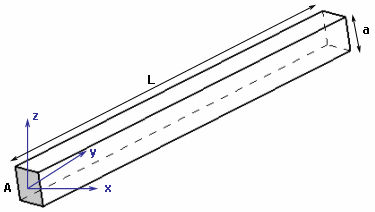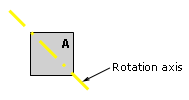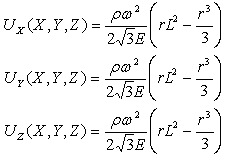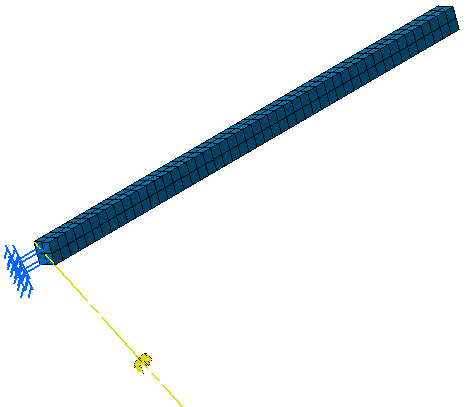This test lets you check analysis results for a beam with an applied rotation at one of its extremity. You will use either the 2D or 3D model.
Reference:
Analytical solution
 Specifications
Specifications
Geometry Specifications
|
Length: |
 |
|
Square section: |
Analysis Specifications
|
Young Modulus (material): |
|
|
Poisson's Ratio (material): |
|
|
Density: |
|
|
Mesh Specifications:
|
|
|
Restraints: |
|
|
Loads (rotation force):
The direction of the rotation axis through the center of the clamped section A is (1,0,-1). |
 |
 Results
Results
-
Analytical solution
In the beam axis:

where:
-
Ux(0)=0
-


The displacements of all the points of the beam in the global axis are given by:

where:

For r=500 mm, the result of the analytic solution is:
Ux=Uy=Uz=8.44374 mm -
-
The table below presents the analysis results:
|
Displacement |
Analytical solution |
Values |
|||
|
Linear Hexahedron |
Linear Quadrangle |
||||
|
|
|
||||
|
Computed Results |
Normalized Results |
Computed Results |
Normalized Results |
||
|
Ux |
8.44374 |
8.44374 |
1 |
8.44372 |
0.999998 |
|
Uy |
8.44374 |
8.44377 |
1.000004 |
8.44377 |
1.000004 |
|
Uz |
8.44374 |
8.44374 |
1 |
8.44376 |
1.000002 |
To Perform the Test:
The rotationloadingHE8.CATAnalysis document presents a complete analysis, computed with a mesh formed of linear hexahedron elements (HE8).
The rotationloadingQD4.CATAnalysis document presents a complete analysis, computed with a mesh formed of linear quadrangle elements (QD4).
To compute the case with linear quadrangle elements (QD4) and linear hexahedron elements (HE8), proceed as follow:
-
Open one of the CATAnalysis documents.
-
Compute the case and activate the Deformed mesh.1 and Translational displacement vector.1 images called Deformed mesh.
